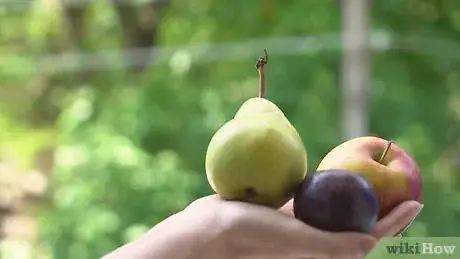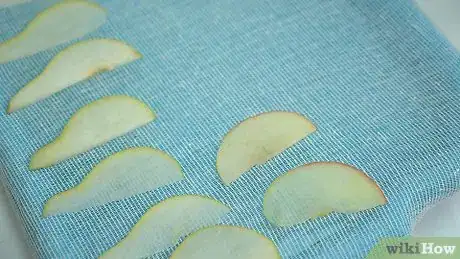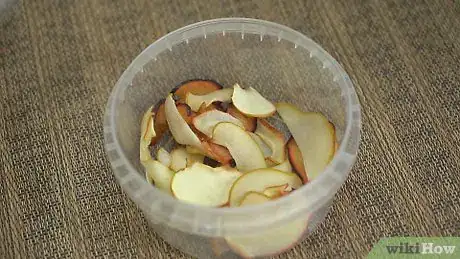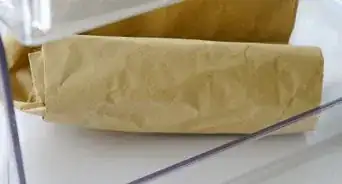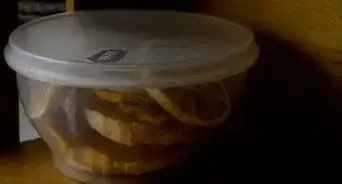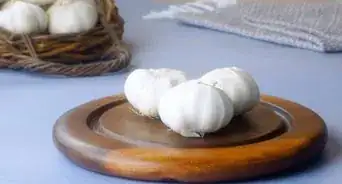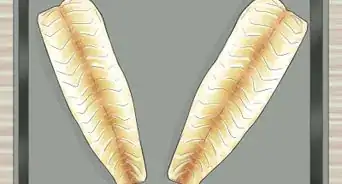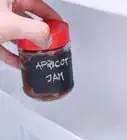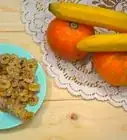This article was co-authored by wikiHow Staff. Our trained team of editors and researchers validate articles for accuracy and comprehensiveness. wikiHow's Content Management Team carefully monitors the work from our editorial staff to ensure that each article is backed by trusted research and meets our high quality standards.
There are 12 references cited in this article, which can be found at the bottom of the page.
The wikiHow Video Team also followed the article's instructions and verified that they work.
This article has been viewed 158,602 times.
Learn more...
Using the sun to dry food is the oldest known method of food preservation, and making nutritious and delicious dried fruit this way is easy to do. The ideal climate for sun drying has strong sunshine, with a minimum temperature of 85 degrees Fahrenheit (30 Centigrade) and low humidity. This article will tell you how to sun dry fruit without electricity or the purchase of expensive equipment.
Steps
-
1Make a drying tray with a plastic screen or using cheesecloth stretched tightly on a frame. Crisscross string on the back of the frame and staple it in the corners to prevent the cheesecloth from sagging.
-
2Harvest the fruit just before it becomes over-ripe. Select fruit that is free from blemishes.[1]Advertisement
-
3Allow the fruit to cool if it is warm from growing in the sun.
-
4Wash, pit, dry, peel (if necessary) and thinly slice the fruit.[2] Thinly-sliced fruit will dry more quickly. By keeping all the pieces about the same size, they will dry uniformly.
-
5Prevent oxidation, or darkening of the fruit, after slicing.[3]
- Dip the fruit in salt water. Use 6 tablespoons of pickling salt to 1 gallon (3.5 liters) of water. Drain and dry the fruit.
- Blanch apples or apricots by steaming the slices for 5 minutes, and then putting them in ice cold water. Thoroughly drain and dry the fruit.
- Make a honey dip for peaches, pineapples or bananas by mixing 1 cup sugar, 3 cups water and 1 cup honey.
- Combine warm water, pineapple juice and lemon juice for a juice dip.[4]
- Mix 2 tablespoons ascorbic acid into 4 cups (1 liter) water for any fruits.[5]
- Boil 1 box of pectin dip with 1 cup water and ½ cup sugar for peaches, cherries or berries.
-
6Arrange the fruit on the drying tray with spaces between, so that the pieces don’t touch.[6]
-
7Place a piece of glass above the food to intensify the sun on the fruit, but make sure there is enough space above the fruit for good air circulation.
-
8Set the tray in the sun for approximately 2-4 days. The actual drying time depends on the type of fruit and outdoor conditions.[7]
- Take the fruit indoors if it is raining and at night to prevent moisture from collecting on the fruit.
-
9Equalize the fruit after drying to allow moisture from some pieces to transfer to the dryer pieces. This can be done by stirring the pieces for a few days or by placing them in paper bags, hanging the bags on a clothesline and shaking the bags a few times a day for a couple of days.
-
10
Community Q&A
-
QuestionI want to dry grapes. What is the best way to do this?
 Awesome samanthaCommunity AnswerYou can use a food dehydrater to dry out the grapes or use the oven on a low temperature.
Awesome samanthaCommunity AnswerYou can use a food dehydrater to dry out the grapes or use the oven on a low temperature. -
QuestionI want to sun dry figs, what are the steps?
 Community AnswerFirst, wash the ripe figs. Cut them in half. Lay them on a rack with plenty of holes. Cover them with a cheesecloth and secure it tightly around the rack. Place the rack under the sun and let the figs dry for 2-3 days.
Community AnswerFirst, wash the ripe figs. Cut them in half. Lay them on a rack with plenty of holes. Cover them with a cheesecloth and secure it tightly around the rack. Place the rack under the sun and let the figs dry for 2-3 days. -
QuestionCan a white handkerchief be used in the absence of cheesecloth?
 Community AnswerIf it's thin and gauzy, maybe - the key here is that cheesecloth has a very loose weave which allows moisture and air circulation.
Community AnswerIf it's thin and gauzy, maybe - the key here is that cheesecloth has a very loose weave which allows moisture and air circulation.
Warnings
- Do not use screens made from galvanized metal, which can oxidize and leave a residue on the fruit.⧼thumbs_response⧽
- Do not sun dry fruit where there is a lot of air pollution, as the food can be contaminated.⧼thumbs_response⧽
Things You'll Need
- Plastic screen
- Cheesecloth
- Wooden frame
- String
- Staples
- Fruit
- Knife
- Cutting board
- Stockpot
- Pickling salt
- Strainer
- Large bowl
- Spoon
- Sugar
- Honey
- Pineapple juice
- Lemon juice
- Ascorbic acid
- Pectin dip
References
- ↑ https://lifehacker.com/is-it-ripe-how-to-tell-when-your-favorite-fruits-and-v-5935711
- ↑ https://www.nhs.uk/live-well/eat-well/how-to-wash-fruit-and-vegetables/
- ↑ https://digitalcommons.usu.edu/cgi/viewcontent.cgi?article=2781&context=extension_curall
- ↑ https://food.unl.edu/how-prevent-cut-fruit-turning-brown
- ↑ https://extension.psu.edu/preserving-color-and-preventing-browning-of-foods
- ↑ https://www.onegreenplanet.org/vegan-food/how-to-sun-dry-foods-yourself-three-methods/
- ↑ https://nchfp.uga.edu/how/dry/sun.html
- ↑ https://nchfp.uga.edu/how/dry/pack_store.html
- ↑ https://www.eatbydate.com/fruits/dried-fruit-shelf-life-expiration-date/

